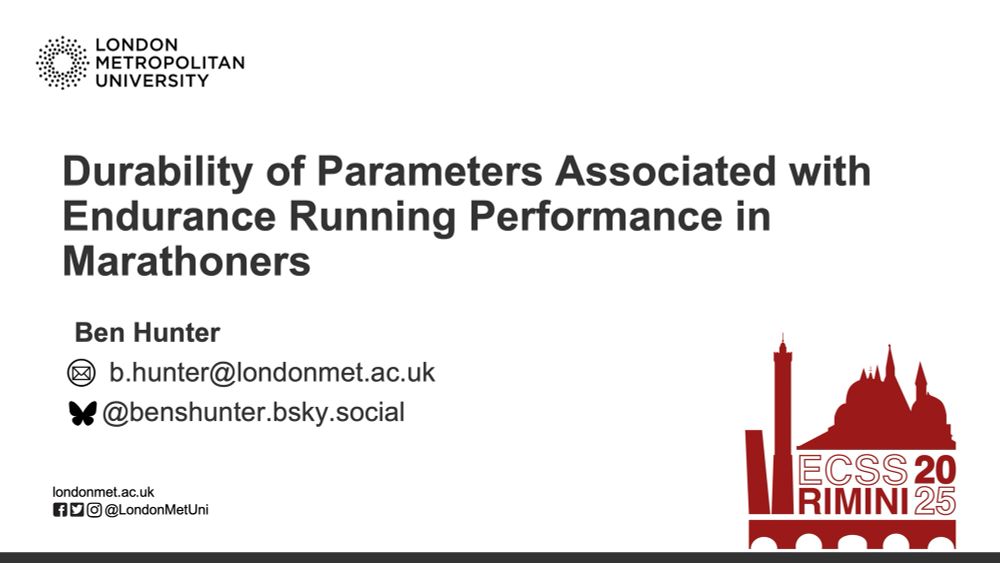https://www.researchgate.net/profile/Ben-Hunter-2?ev=hdr_xprf
🔑 The key finding:
The smaller the decline in the sLT between PRE and POST, the faster the runner’s marathon time (D)
Runners with more “durable” thresholds performed better.

🔑 The key finding:
The smaller the decline in the sLT between PRE and POST, the faster the runner’s marathon time (D)
Runners with more “durable” thresholds performed better.
After a 90-min run at lactate threshold pace, from PRE to POST on average:
- VO₂peak ⬇️ ~6%
- RE and FULT ↔️
- Speed at lactate threshold (sLT) ⬇️ ~0.7 km/h
⚠️ changes to these exhibited inter individual variability.

After a 90-min run at lactate threshold pace, from PRE to POST on average:
- VO₂peak ⬇️ ~6%
- RE and FULT ↔️
- Speed at lactate threshold (sLT) ⬇️ ~0.7 km/h
⚠️ changes to these exhibited inter individual variability.
In this study, we measured determinants of endurance performance (VO₂peak, FULT, and RE) in 18 runners from the 2024 London Marathon in both fresh (PRE) and fatigued (POST) states, as well as tracking their performance during the race.

In this study, we measured determinants of endurance performance (VO₂peak, FULT, and RE) in 18 runners from the 2024 London Marathon in both fresh (PRE) and fatigued (POST) states, as well as tracking their performance during the race.
BUT after adjusting for speed, most of these differences disappeared, suggesting that The findings suggest that most commonly observed biomechanical changes following prolonged running are largely mediated by changes in speed.

BUT after adjusting for speed, most of these differences disappeared, suggesting that The findings suggest that most commonly observed biomechanical changes following prolonged running are largely mediated by changes in speed.
Runners with greater decoupling slowed more and showed larger biomechanical deteriorations.

Runners with greater decoupling slowed more and showed larger biomechanical deteriorations.
We recruited 69 marathon runners and analysed their HR + footpod data over 5 km splits during their respective marathons. They were separated into low, moderate, or high decoupling groups.

We recruited 69 marathon runners and analysed their HR + footpod data over 5 km splits during their respective marathons. They were separated into low, moderate, or high decoupling groups.
🗓️ 02.07.2025, 13:15
📍 Lavatoio
If you’re not attending and would like a copy of the slides, get in touch.

🗓️ 02.07.2025, 13:15
📍 Lavatoio
If you’re not attending and would like a copy of the slides, get in touch.


Our review published in @expphysiol.bsky.social
explores key methodological approaches and considerations to be made when profiling durability in research and applied settings.

Our review published in @expphysiol.bsky.social
explores key methodological approaches and considerations to be made when profiling durability in research and applied settings.

